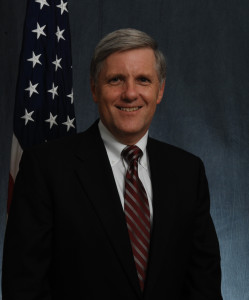Stanford Law School Policy Lab Students File Recommendations to Update National Environmental Policy Act
STANFORD, Calif., July 18, 2014 – Stanford Law School students this week filed detailed recommendations to the White House’s Council on Environmental Quality on how to update the National Environmental Policy Act of 1969 (NEPA), the nation’s foundational environmental law. Their submittal made a strong case for requiring better coordination among the project proponents, interested federal agencies, and important stakeholders so all of the key parties can identify major project flaws early, ensure that the environmental impact statements (EISs) will cover the key environmental issues (and not tangential issues that elongate the process and divert attention from the issues that matter) and that the process covers the full range of permitting and review needs.

The students worked closely with David J. Hayes, former deputy secretary of the Department of the Interior and a Distinguished Visiting Lecturer at Stanford Law School, in a unique policy practicum called “The National Environmental Policy Act: Pushing the Reset Button” to research the recommendations. They focused on major federal projects, for which NEPA requires the preparation of full EISs.
“The policy lab was an incredible experience, and a very different experience from other law school classes,” said Rebecca Vogel, JD ’15. “We learned about NEPA and the related agency regulations with an eye toward how to make the process work better in practice; that purpose really shaped our approach and added extra motivation to learn. David’s experience in the field did not diminish his receptiveness to new ideas, and every student got the chance both to brainstorm reforms and to delve more deeply into the areas that intrigued us.”
In the submittal, students recommended that agencies be required to use modern information technology tools when preparing EISs, including searchable databases and geographic information system-based mapping. Together, these types of reforms should cut down on the preparation time for EISs, while producing better, more readable and relevant products.
“Students in the policy lab have made a major contribution to the current debate on how to improve implementation of one of our bedrock environmental laws,” said Hayes. “Their product will be an invaluable resource for the Council on Environmental Quality, legislators and other interested parties who are committed to improving the EIS process.”
In addition to Vogel, students involved in the practicum included Julia Forgie, JD ’14, Elizabeth Hook, JD ’15, Matthew Miller, JD ’15, and Laura E. Sullivan, JD ’15.
You can read more about the practicum and view the submittal in its entirety at: http://stanford.io/1nk5yTI.
